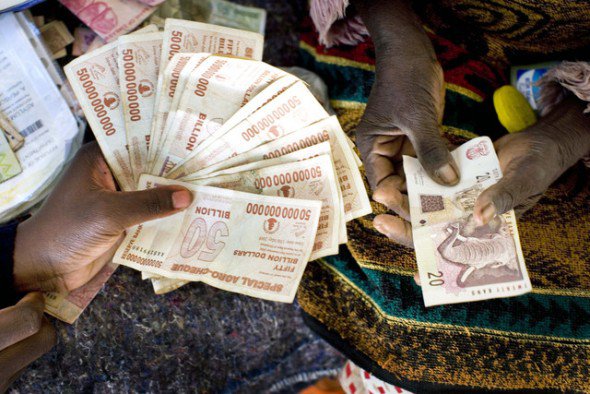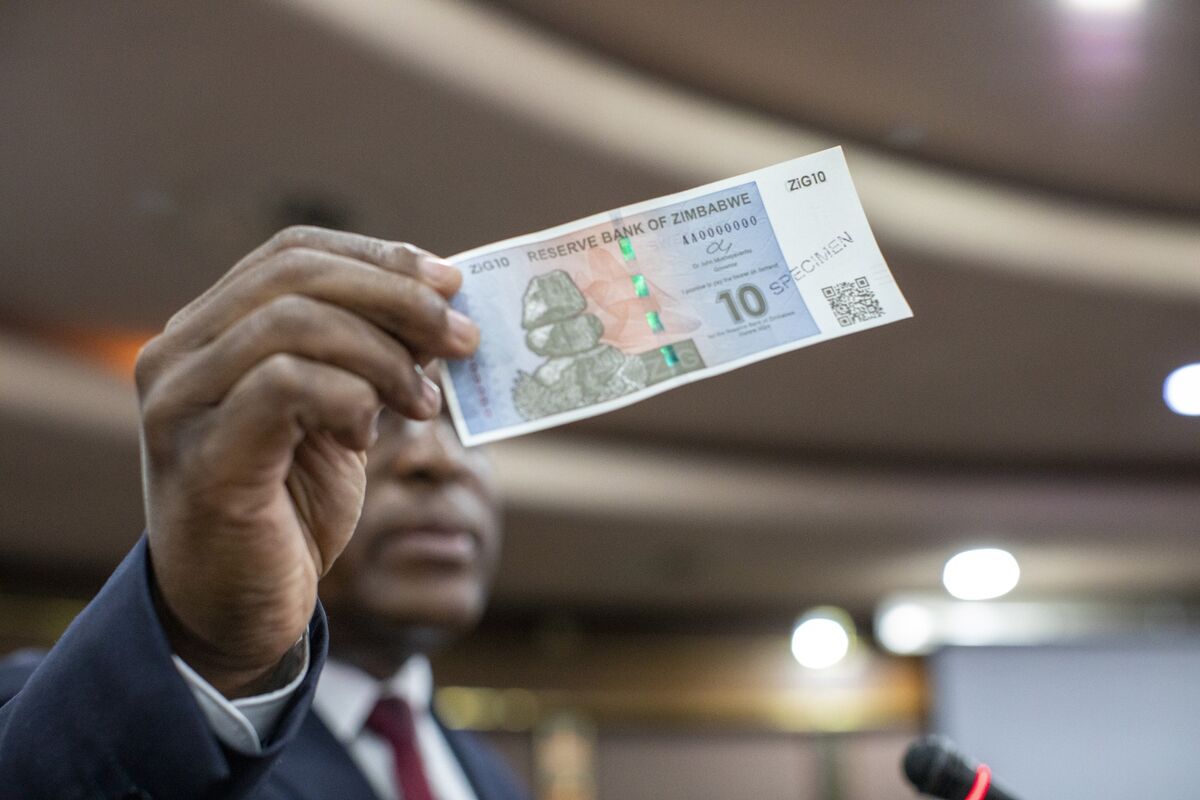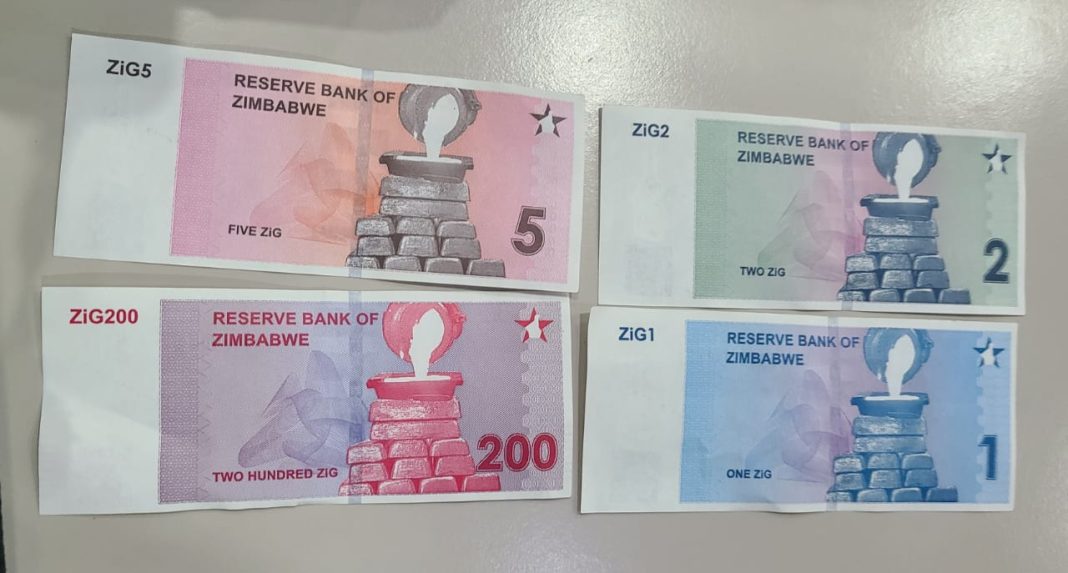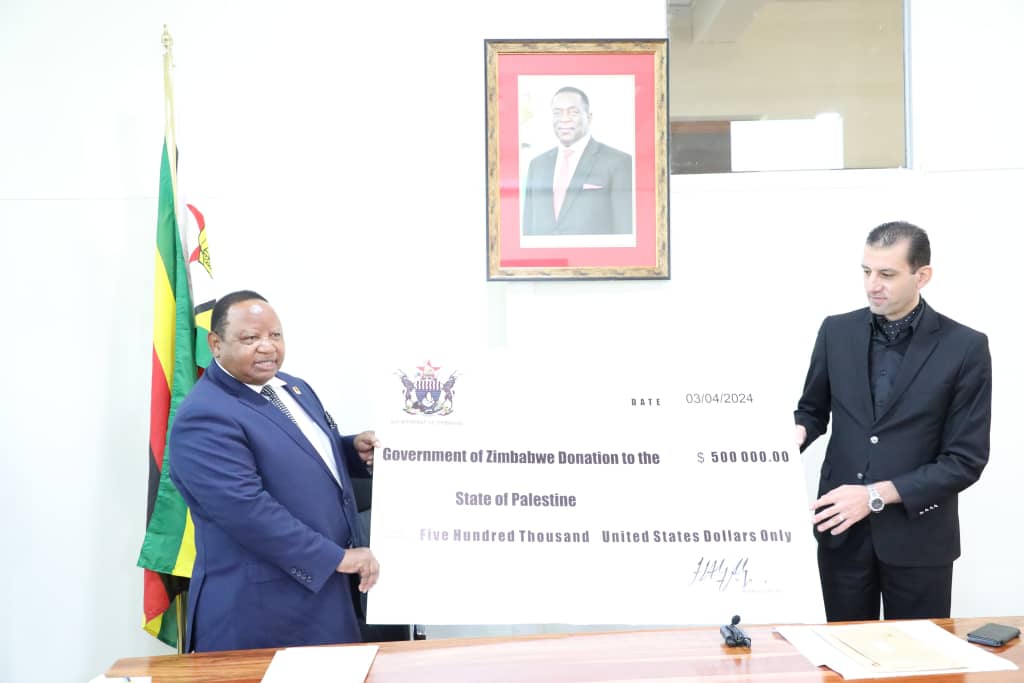The Zimbabwe dollar under pressure from an ever-depreciating exchange rate on the parallel market, lost significant ground in the last couple of days, central bank figures show.
The local currency opened the week trading at $6 467,01 per US dollar, but closed Wednesday trading at $8 240,26 per greenback according to official data posted on the Reserve Bank of Zimbabwe’s website.
This is a 21,52 percent tumble and huge when compared to how the official exchange rate has been moving in the past.
Between December 1, 2023 and Monday this week, the local currency exchange rate to the greenback only moved from $5 793,12 to $6 467,01 a 10,42 percent drop.
This means the cost of US dollar has gone up for those holding the local currency.
The devaluation comes at a time the premium between the parallel market rate had surged to an estimated 85 percent causing serious distortions and pricing difficulties to law-abiding businesses that use the official exchange rate plus a 10 percent trading margin.
The local dollar has reportedly depreciated by more than 40 percent on the parallel market, as high demand for foreign exchange continues to outstrip supply.
The 2022 Finance Act promulgated that all businesses apply an exchange rate of the auction rate plus 10 percent in their businesses when trading.
But the less policed informal businesses trade at will and do not care what the law says, as there are usually no consequences.
This has seen a massive loss of USD sales in the formal sector every time there is a wide parallel market premium as is currently the case.
Business lobby groups such as the Confederation of Zimbabwe Industries see the exchange rate disparity as a “major driver of informalisation as every time there is this wide parallel market premium as there are currency informal traders roaming the shopping malls to convert shoppers’ USD into the local currency before they shop and there is a loss of USD VAT revenue to Government running into millions of US dollars”.
The distorted exchange rate has remained an Achilles heel for law-abiding formal businesses as they fail to compete with stiff competition from informal businesses that don’t care what the law says.
There has thus been pressure that the official rate be closer to the parallel market rate or that the local dollar be allowed to freely float.
After its meeting in October last year, the RBZ’s Monetary Policy Committee recommended that the 10 percent trading margin above the interbank rate be scrapped.
“In order to support the continuous fine-tuning and further liberalisation of the foreign exchange market, with a view to guaranteeing and safeguarding exchange rate stability, it is recommended that the limit of 10 percent trading margin above the interbank rate be removed,” reads part of the MPC’s statement post the October meeting.
On its part, CZI proposed that formal businesses be allowed to use an exchange rate that is not more than 20 percent below the (parallel) market rates in order to continue trading in USD and “to ensure that USD revenue does not shift to the informal sector”.
But Treasury has remained mum on this and the 2023 Finance Act did not make a position on this aspect.
Foreign currency is officially traded on two platforms: the wholesale auction conducted by the RBZ as well as the interbank market where banks trade among themselves.
The interbank market, however, normally takes a cue from the auction system on the exchange rate, but with the auction system currently on a break, banks have been using the previous day’s rate as a starting point.
Between the 1st of December 2023, the official exchange rate had only weakened by just 10,42 percent only to record a significant drop of 21,52 percent in three days.
This has raised questions on what could have led to the sharp depreciation.
An executive with a local bank said there has not been any official communication from the central bank concerning the exchange rate.
He said what is posted on the RBZ website is a summary of what banks would have been doing the previous day.
A treasury dealer with another bank said they were surprised Wednesday morning to get a significantly higher starting exchange rate than the usual movement.
“After trading at $6,467 on Monday, on Tuesday the mid rate was $6 908,98 but on Wednesday it had jumped to $7 687,38 and now we are already at $8 240,26.
“I suspect, given the movements on the parallel market, they want the auction system to return with a rate much closer to the parallel market one,” said the dealer who requested not to be named.
The central bank has previously said they prefer the premium between the official exchange rate and the parallel market rate to be approximately 20 percent.
Foreign currency dealers in the streets of Harare said the market is awash with local currency.
“We are seeing people looking offering billions of the Zimbabwean dollar in various groups, it has not been like that for a while,” said one street dealer.
A banker said official forex dealers have probably realised they won’t get any USD sellers if they don’t pay something closer to the parallel market rate.
“Apart from exporters who are forced to surrender at official rates, no one will voluntarily offload forex at official rates.
“Businesses that use the official rate are also losing out on forex sales as money changers are doing business right at their doorstep,” said the banker.-Zimpapers






